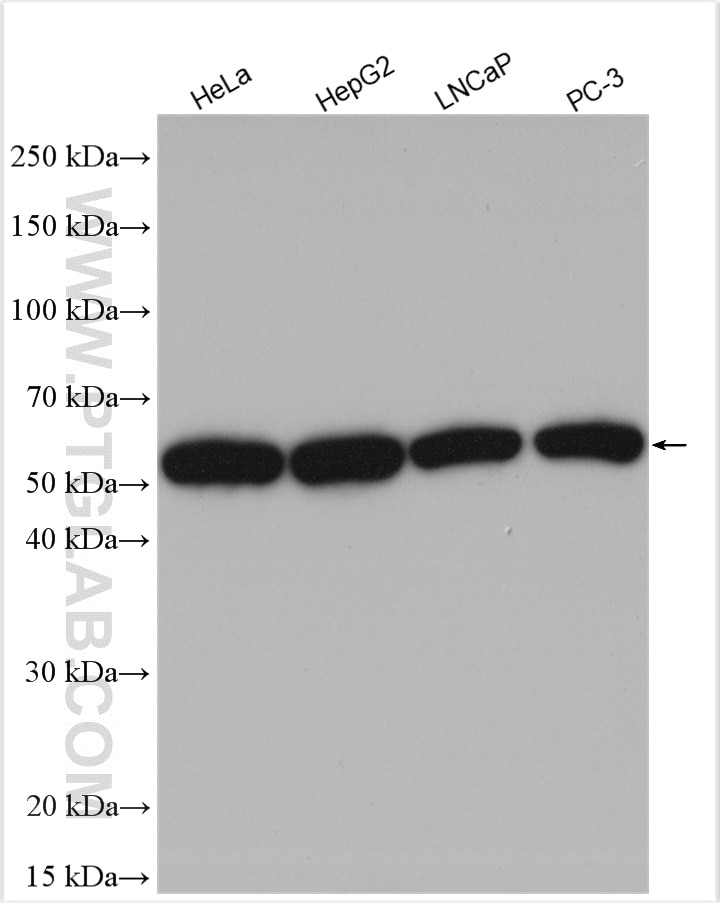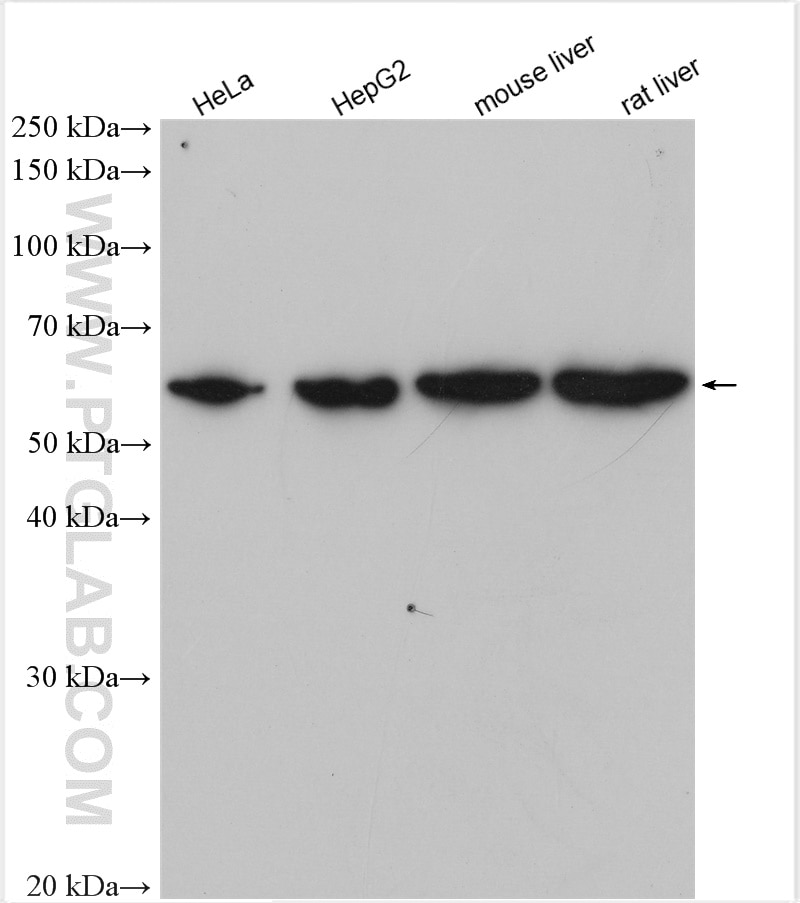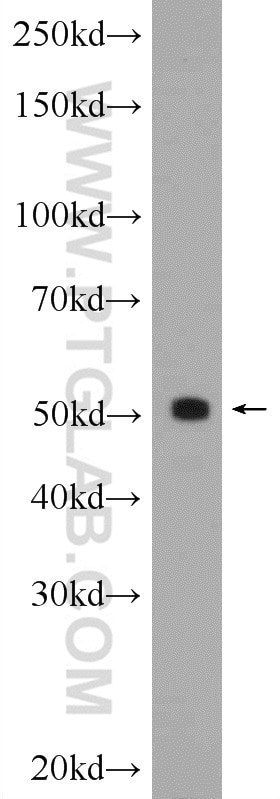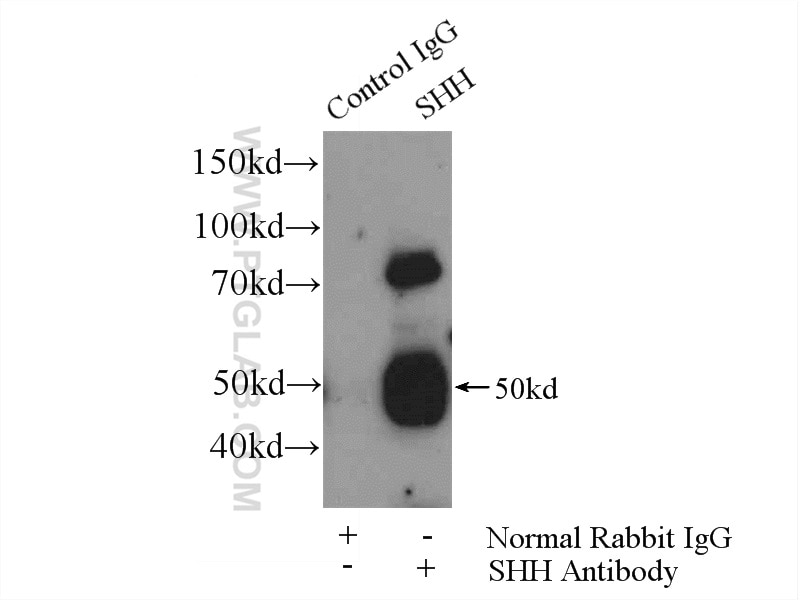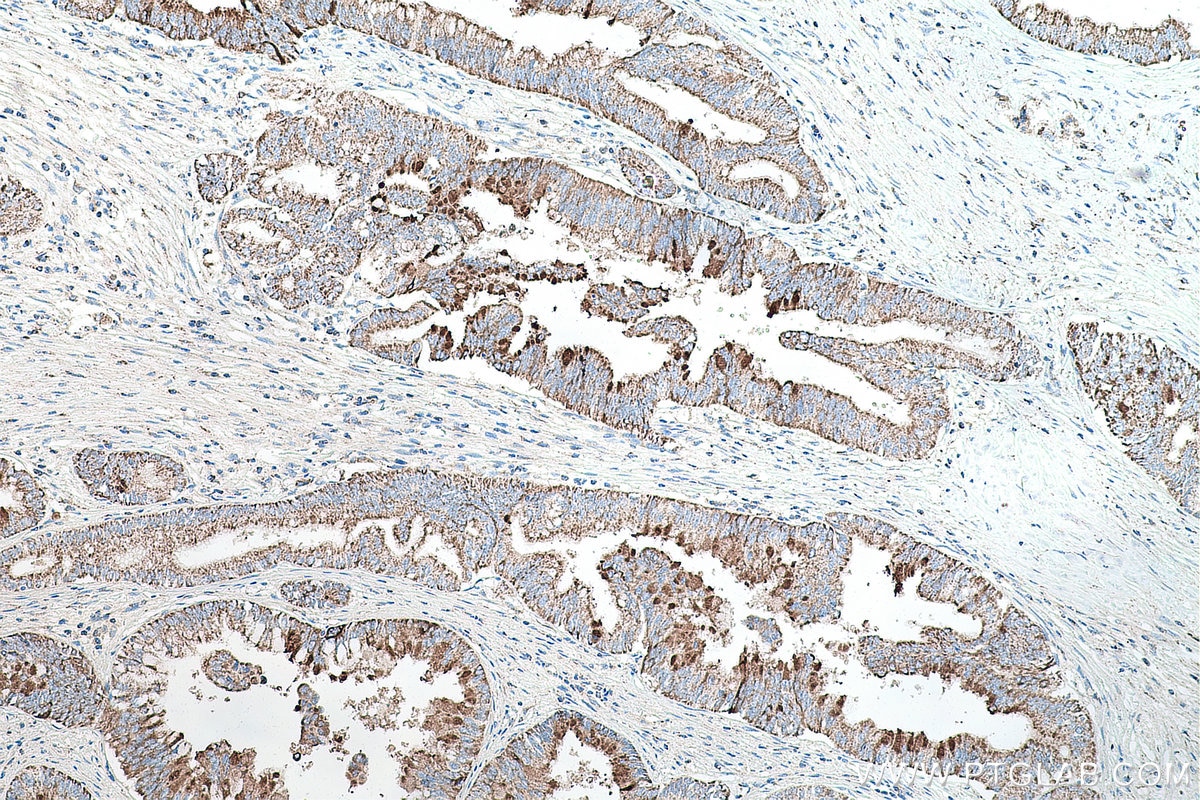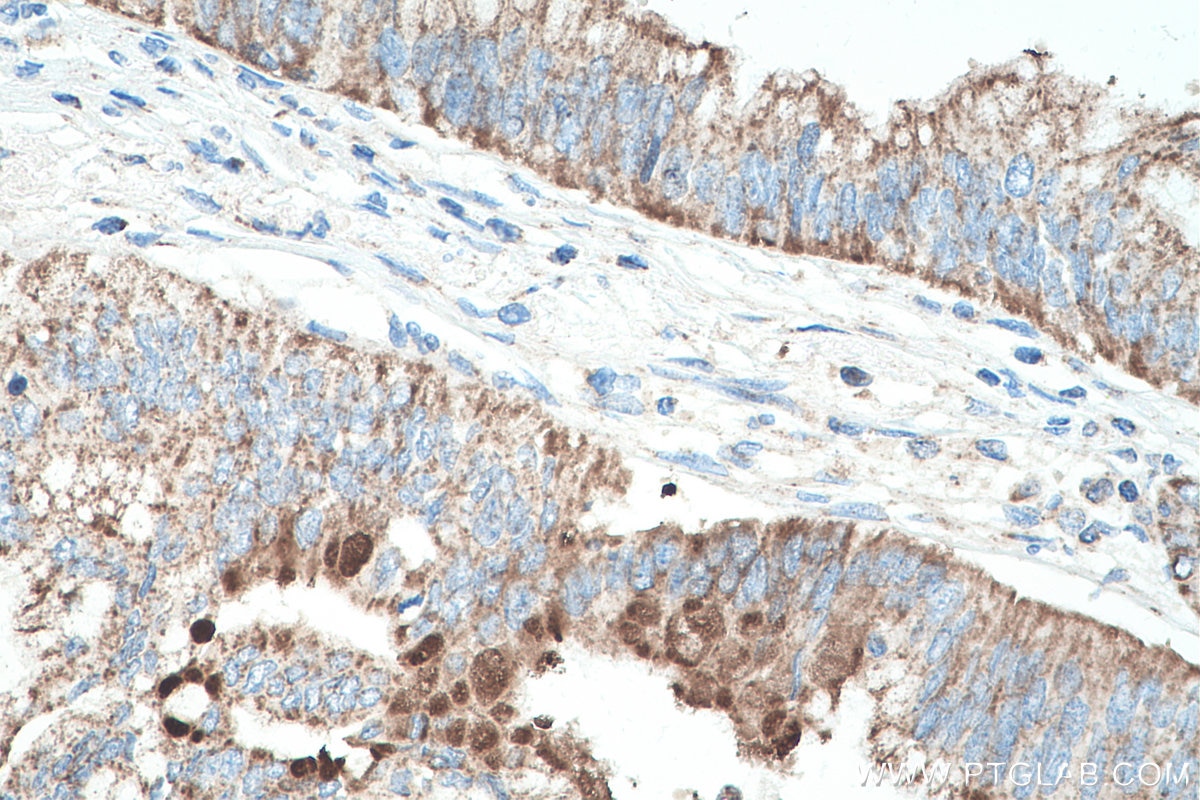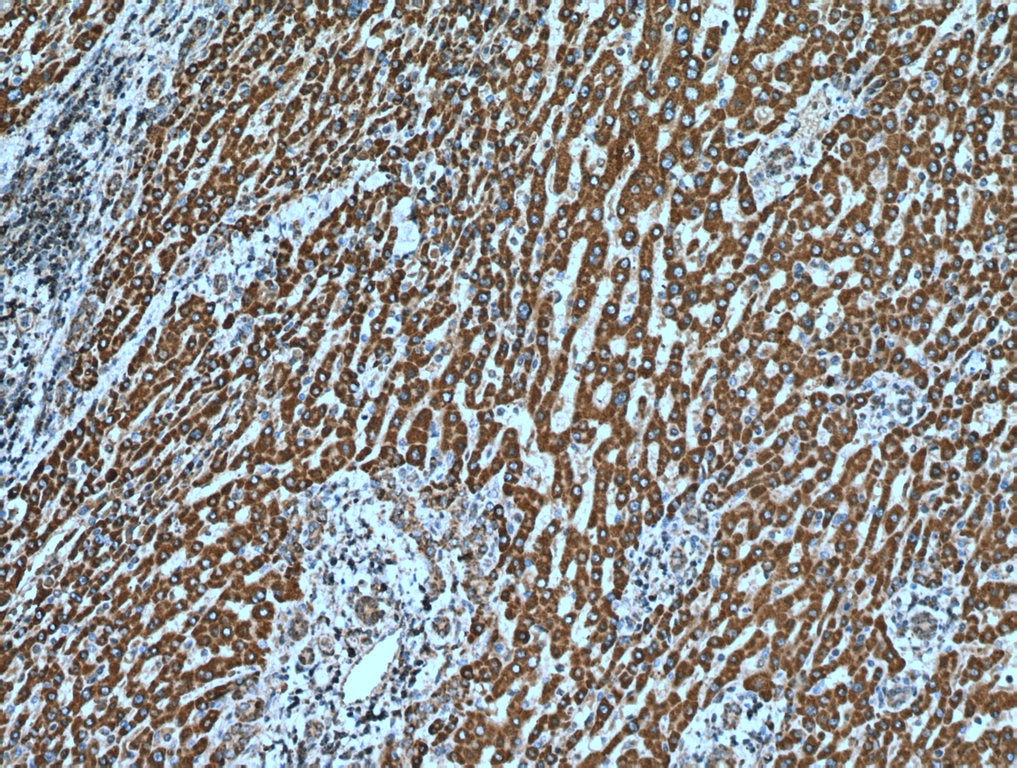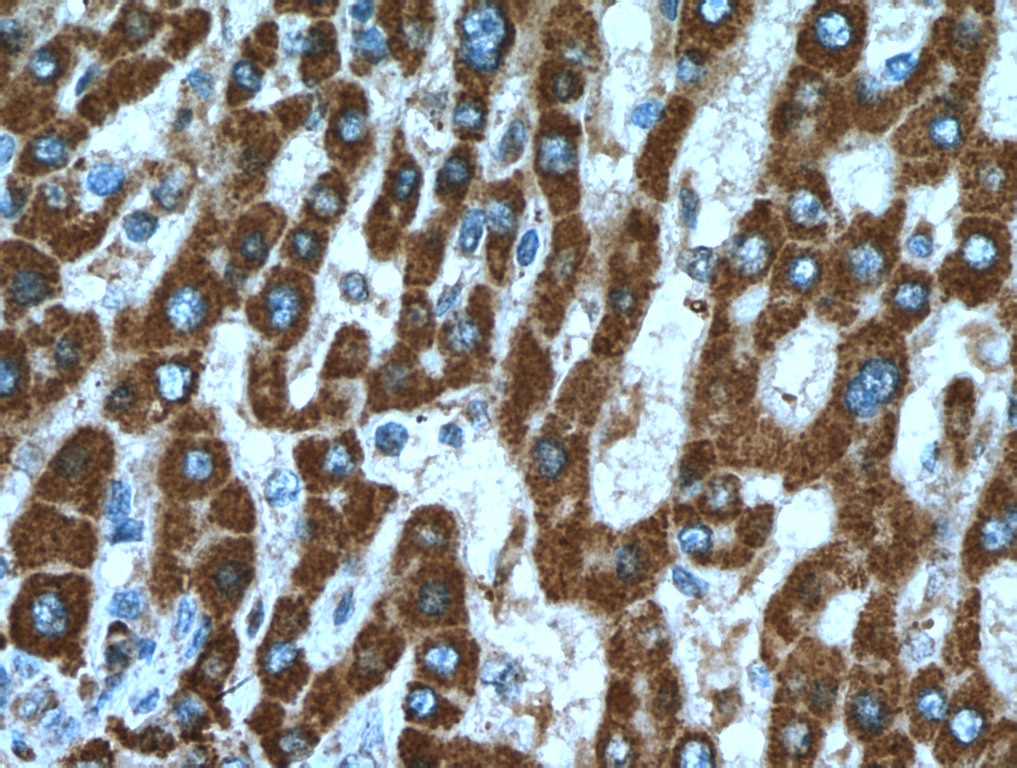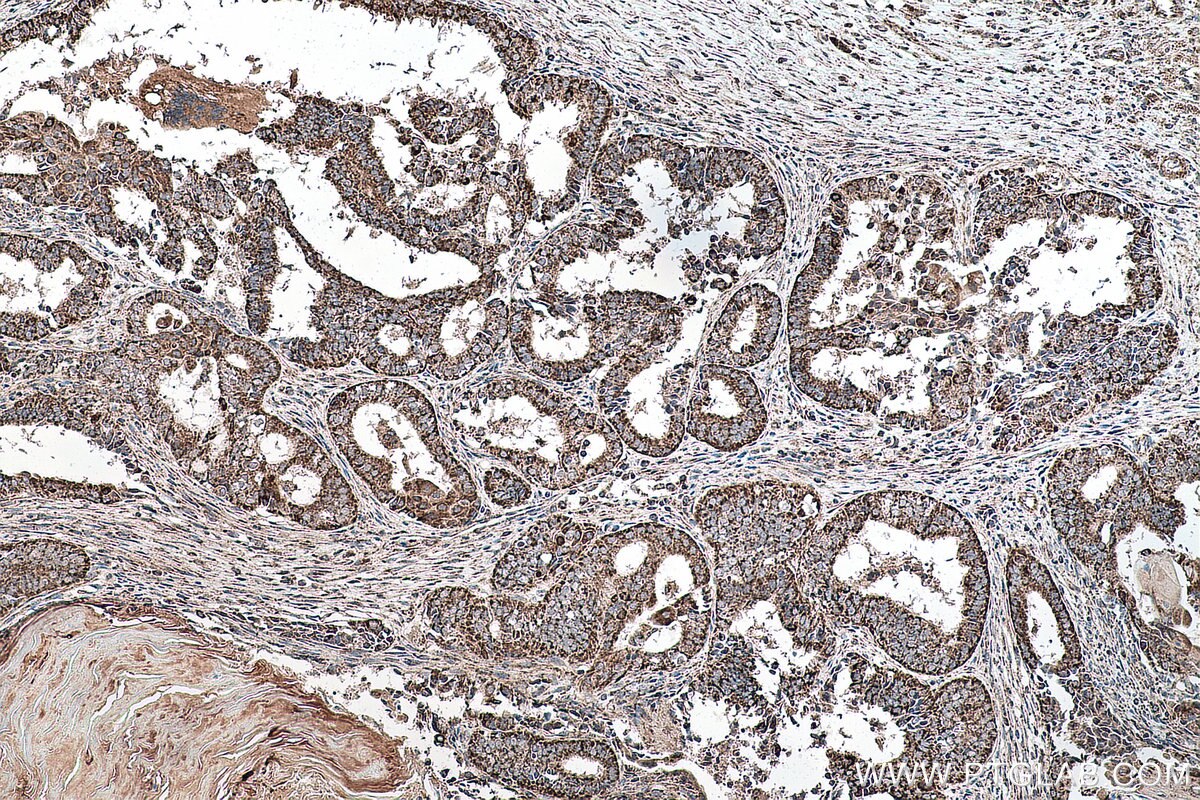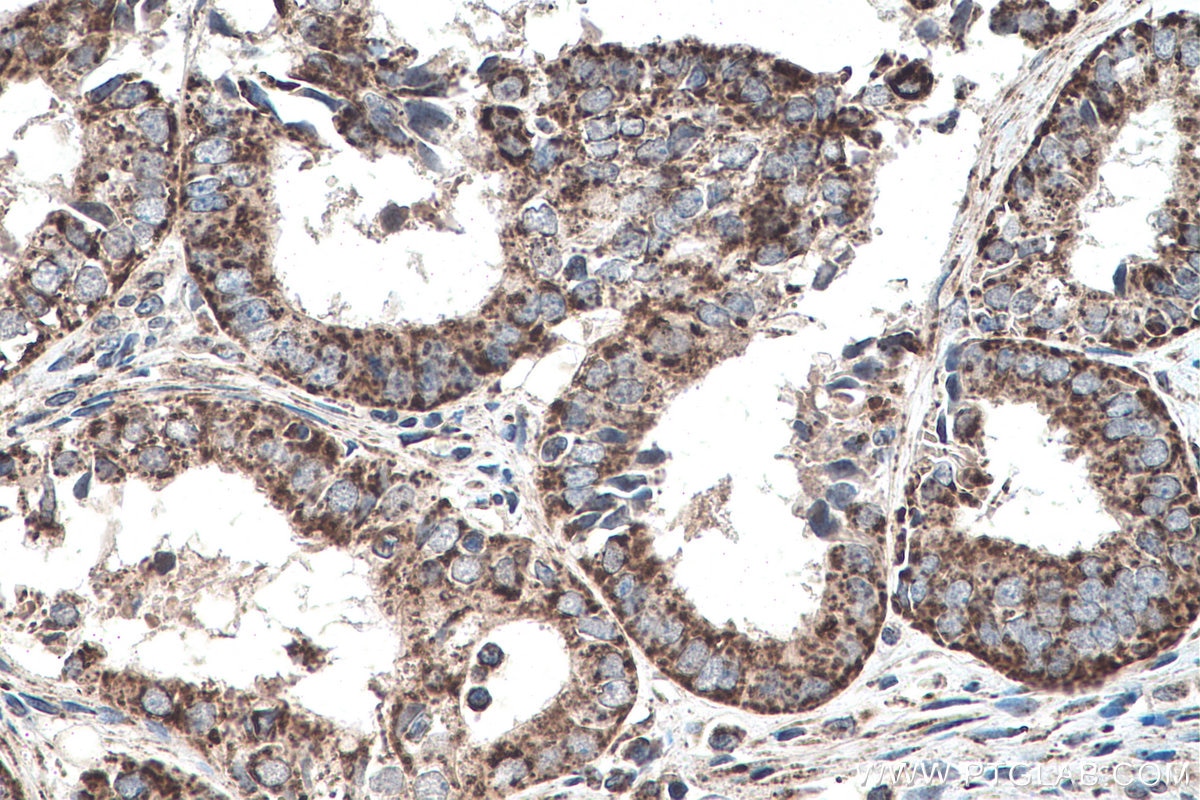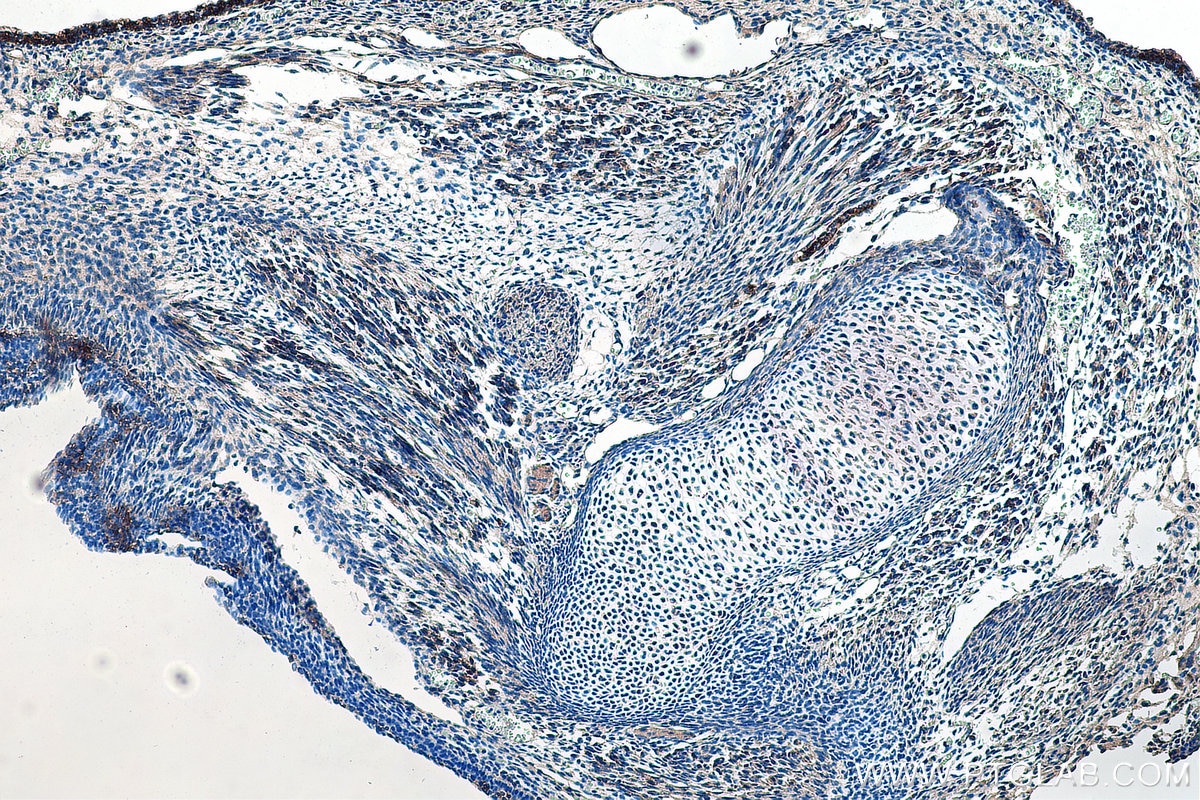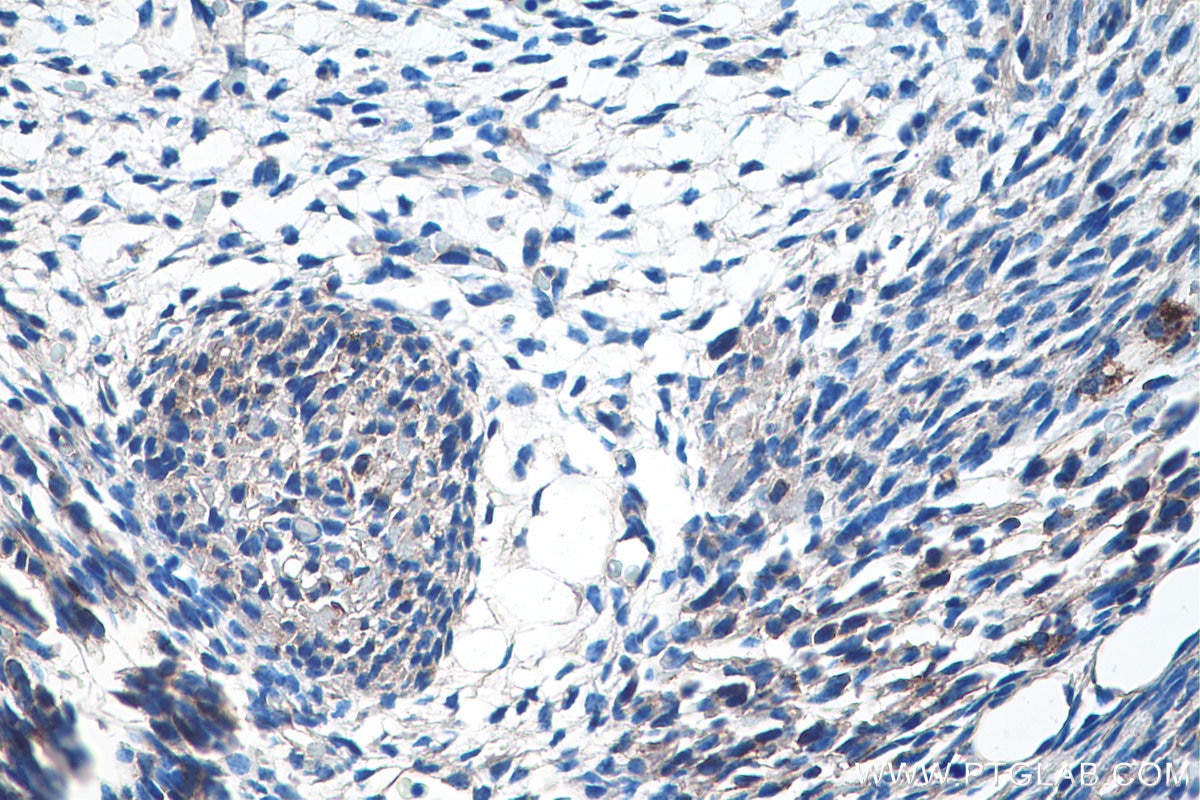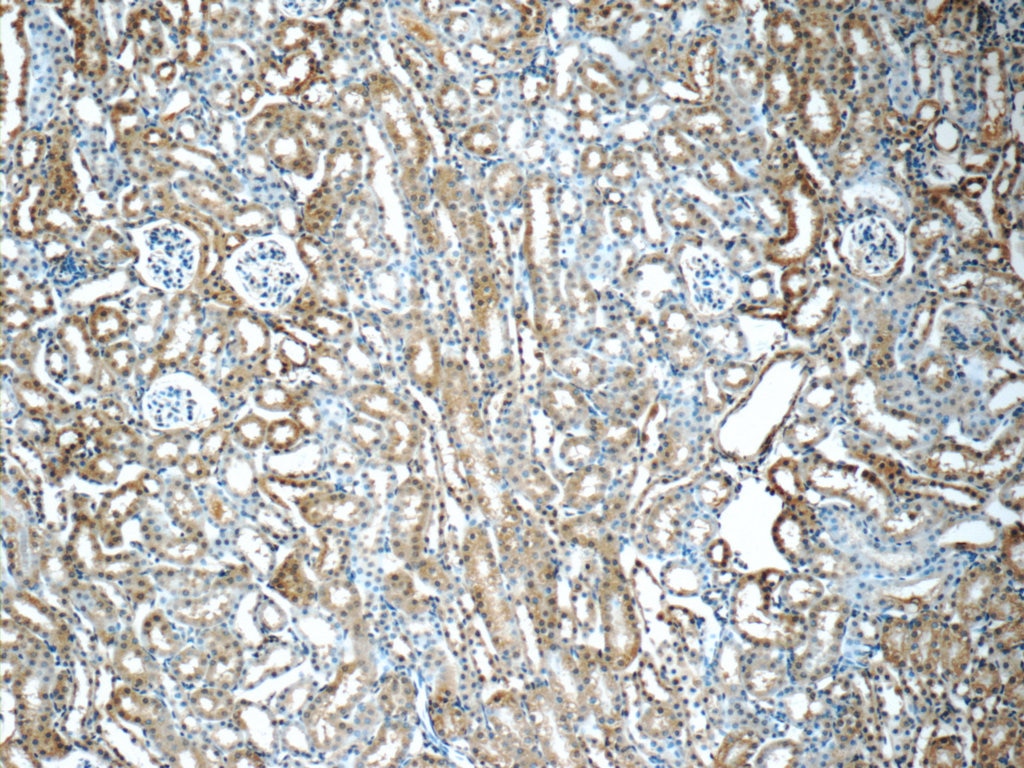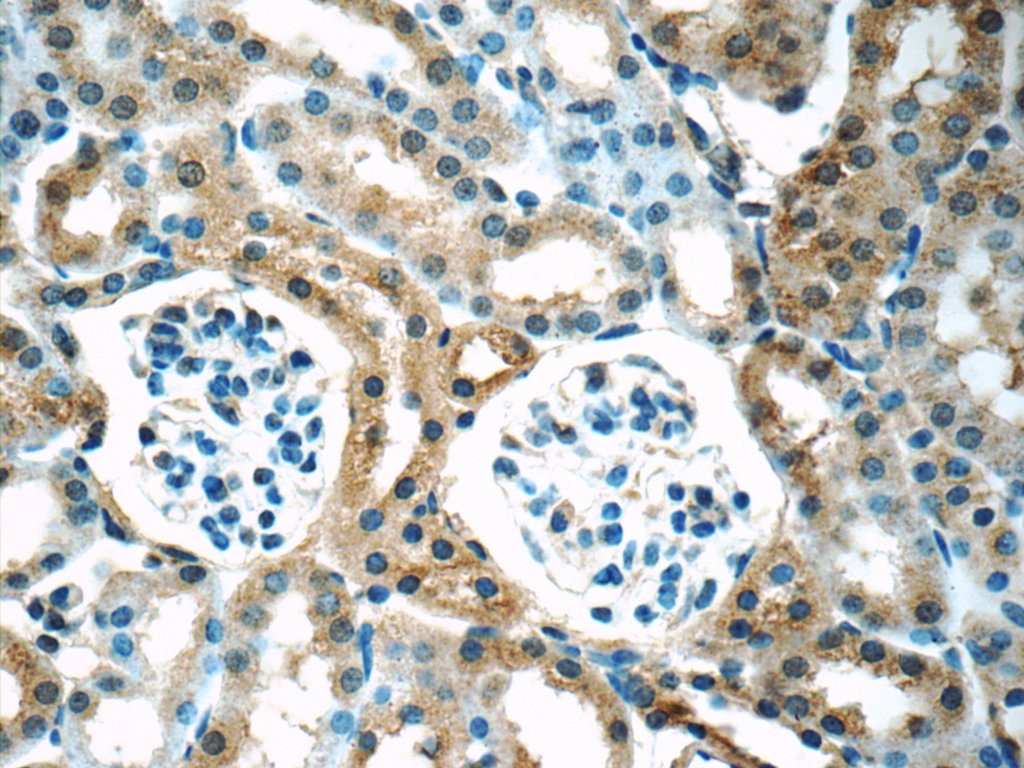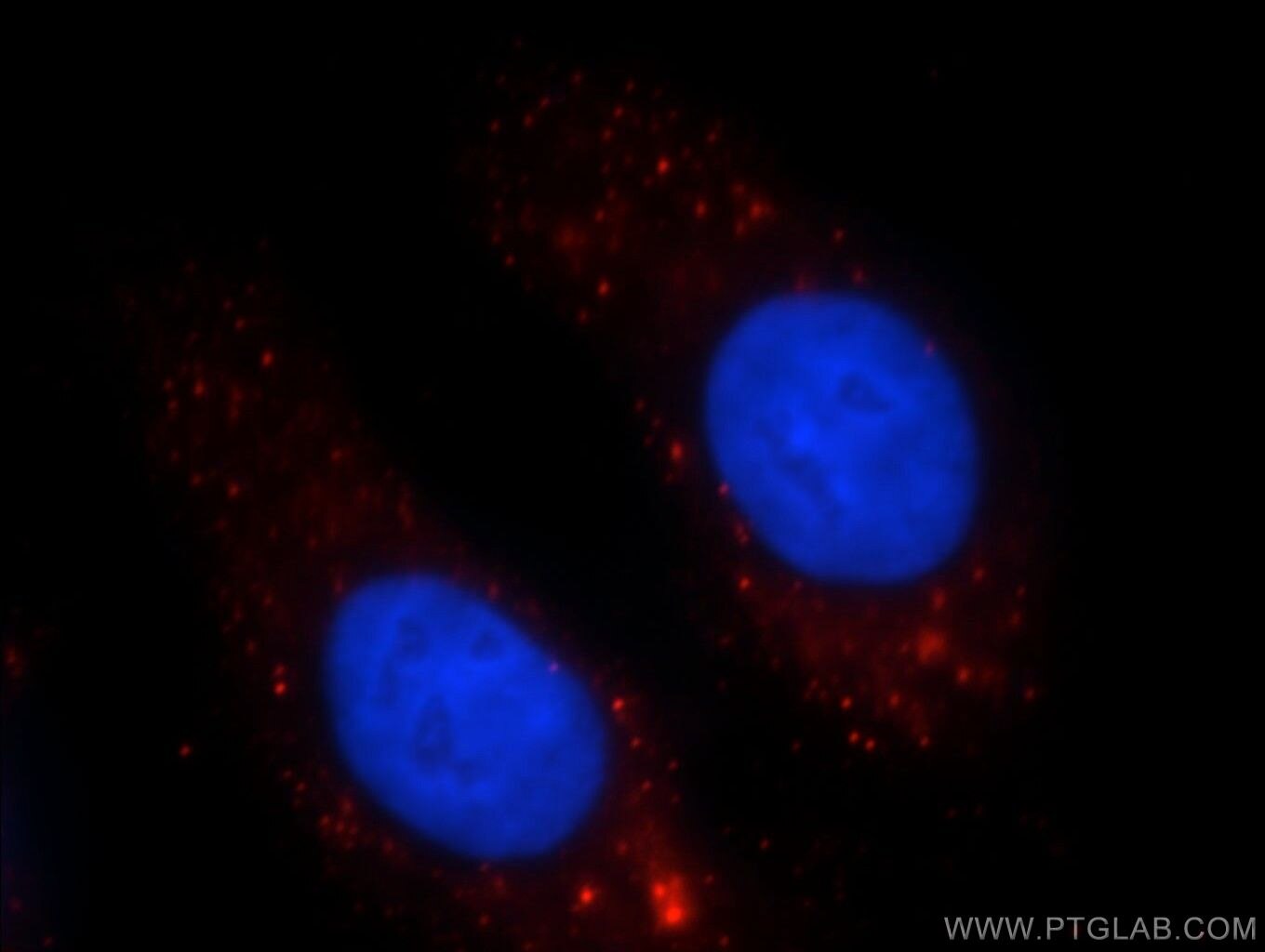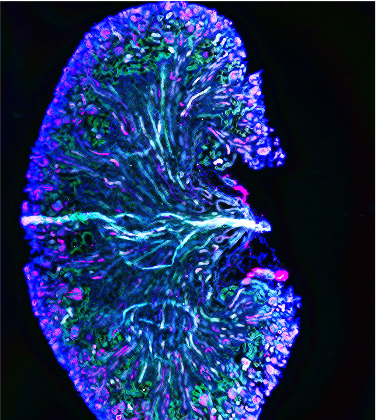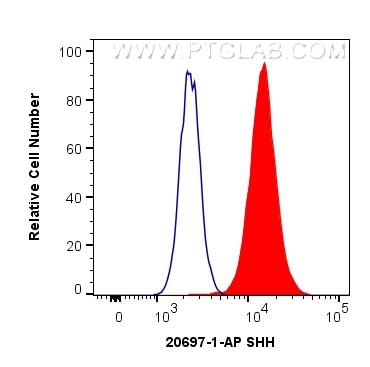- Phare
- Validé par KD/KO
Anticorps Polyclonal de lapin anti-SHH
SHH Polyclonal Antibody for WB, IHC, IF/ICC, FC (Intra), IP, ELISA
Hôte / Isotype
Lapin / IgG
Réactivité testée
Humain, rat, souris et plus (1)
Applications
WB, IHC, IF/ICC, FC (Intra), IP, ELISA
Conjugaison
Non conjugué
N° de cat : 20697-1-AP
Synonymes
Galerie de données de validation
Applications testées
| Résultats positifs en WB | cellules HeLa, cellules HepG2, cellules LNCaP, cellules PC-3, tissu hépatique de rat, tissu hépatique de souris, tissu rénal de rat |
| Résultats positifs en IP | tissu hépatique de souris |
| Résultats positifs en IHC | tissu de cancer du foie humain, tissu de cancer du pancréas humain, tissu de tumeur ovarienne humain, tissu embryonnaire de souris, tissu rénal de souris il est suggéré de démasquer l'antigène avec un tampon de TE buffer pH 9.0; (*) À défaut, 'le démasquage de l'antigène peut être 'effectué avec un tampon citrate pH 6,0. |
| Résultats positifs en IF/ICC | cellules HepG2, tissu rénal de souris |
| Résultats positifs en FC (Intra) | cellules HepG2, |
Dilution recommandée
| Application | Dilution |
|---|---|
| Western Blot (WB) | WB : 1:500-1:3000 |
| Immunoprécipitation (IP) | IP : 0.5-4.0 ug for 1.0-3.0 mg of total protein lysate |
| Immunohistochimie (IHC) | IHC : 1:50-1:500 |
| Immunofluorescence (IF)/ICC | IF/ICC : 1:10-1:100 |
| Flow Cytometry (FC) (INTRA) | FC (INTRA) : 0.40 ug per 10^6 cells in a 100 µl suspension |
| It is recommended that this reagent should be titrated in each testing system to obtain optimal results. | |
| Sample-dependent, check data in validation data gallery | |
Applications publiées
| KD/KO | See 3 publications below |
| WB | See 59 publications below |
| IHC | See 11 publications below |
| IF | See 7 publications below |
Informations sur le produit
20697-1-AP cible SHH dans les applications de WB, IHC, IF/ICC, FC (Intra), IP, ELISA et montre une réactivité avec des échantillons Humain, rat, souris
| Réactivité | Humain, rat, souris |
| Réactivité citée | rat, Humain, souris, vison |
| Hôte / Isotype | Lapin / IgG |
| Clonalité | Polyclonal |
| Type | Anticorps |
| Immunogène | Peptide |
| Nom complet | sonic hedgehog homolog (Drosophila) |
| Masse moléculaire calculée | 50 kDa |
| Poids moléculaire observé | 45-51 kDa |
| Numéro d’acquisition GenBank | NM_000193 |
| Symbole du gène | SHH |
| Identification du gène (NCBI) | 6469 |
| Conjugaison | Non conjugué |
| Forme | Liquide |
| Méthode de purification | Purification par affinité contre l'antigène |
| Tampon de stockage | PBS avec azoture de sodium à 0,02 % et glycérol à 50 % pH 7,3 |
| Conditions de stockage | Stocker à -20°C. Stable pendant un an après l'expédition. L'aliquotage n'est pas nécessaire pour le stockage à -20oC Les 20ul contiennent 0,1% de BSA. |
Informations générales
Sonic hedgehog (SHH) is a member of the Hedgehog (Hh) family of proteins that control cell growth, survival,
and fate.
What is the molecular weight of SHH?
The molecular weight of SHH is approximately 45 kDa, but it is cleaved autocatalytically to generate a 20 kDa
N-terminal fragment and a 25 kDa C-terminal fragment responsible for hedgehog biological activity and the
auto-processing machinery respectively (PMID: 10753901).
What is the tissue specificity of SHH?
SHH is the most broadly expressed mammalian Hh signaling molecule. During early vertebrate development,
SHH is expressed in midline tissues such as the node, notochord, and floor plate to control the left-right and
dorso-ventral patterning of the embryo (PMID: 12729563). SHH is expressed in fetal intestine, liver, kidney,
and lung tissue, but is not expressed in adult tissues.
What is the cellular localization of SHH?
SHH is localized to the cell membrane. The N-terminal fragment is associated with lipid rafts at the cell surface,
whereas the C-terminal fragment diffuses from the cell.
What is the role of SHH in the Sonic hedgehog signaling pathway?
This pathway is one of the major trafficking networks that regulate key events during developmental growth
and patterning (PMID: 19368798). Loss of SHH signaling and regulation has been implicated in birth defects,
tissue regeneration, stem cell renewal, and cancer growth (PMID: 15549094). The regulatory action of the SHH
pathway is linked to the secretion, uptake, and translocation of the SHH protein; a ligand precursor, which is
implicated in the regulation of the central nervous system polarity and neural patterning (PMID: 11130178,
11801325).
Protocole
| Product Specific Protocols | |
|---|---|
| WB protocol for SHH antibody 20697-1-AP | Download protocol |
| IHC protocol for SHH antibody 20697-1-AP | Download protocol |
| IF protocol for SHH antibody 20697-1-AP | Download protocol |
| IP protocol for SHH antibody 20697-1-AP | Download protocol |
| Standard Protocols | |
|---|---|
| Click here to view our Standard Protocols |
Publications
| Species | Application | Title |
|---|---|---|
Nat Commun TSPAN8 promotes cancer cell stemness via activation of sonic Hedgehog signaling. | ||
Theranostics Single-cell Transcriptome Profiling reveals Dermal and Epithelial cell fate decisions during Embryonic Hair Follicle Development. | ||
Cancer Lett An SGLT2 inhibitor modulates SHH expression by activating AMPK to inhibit the migration and induce the apoptosis of cervical carcinoma cells.
| ||
Oxid Med Cell Longev TLR4 Modulates Senescence and Paracrine Action in Placental Mesenchymal Stem Cells via Inhibiting Hedgehog Signaling Pathway in Preeclampsia. | ||
Phytother Res Total flavonoid extract from Dracocephalum moldavica L. improves pulmonary fibrosis by reducing inflammation and inhibiting the hedgehog signaling pathway | ||
Int J Oncol Effects of three-dimensional collagen scaffolds on the expression profiles and biological functions of glioma cells. |
Avis
The reviews below have been submitted by verified Proteintech customers who received an incentive forproviding their feedback.
FH Quentin (Verified Customer) (03-28-2024) | It has worked perfectly for Western-Blot but not in Immunofluorescence on cell culture.
|
